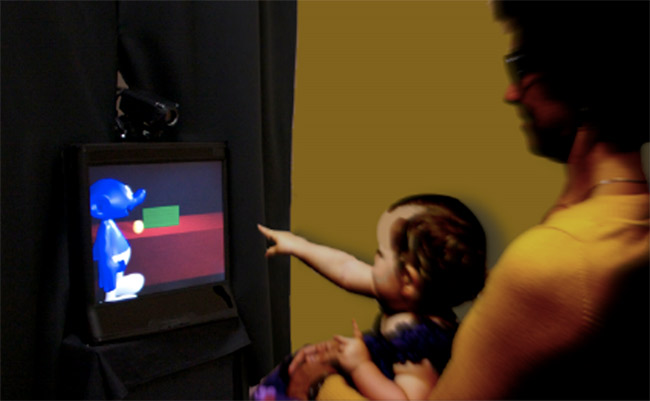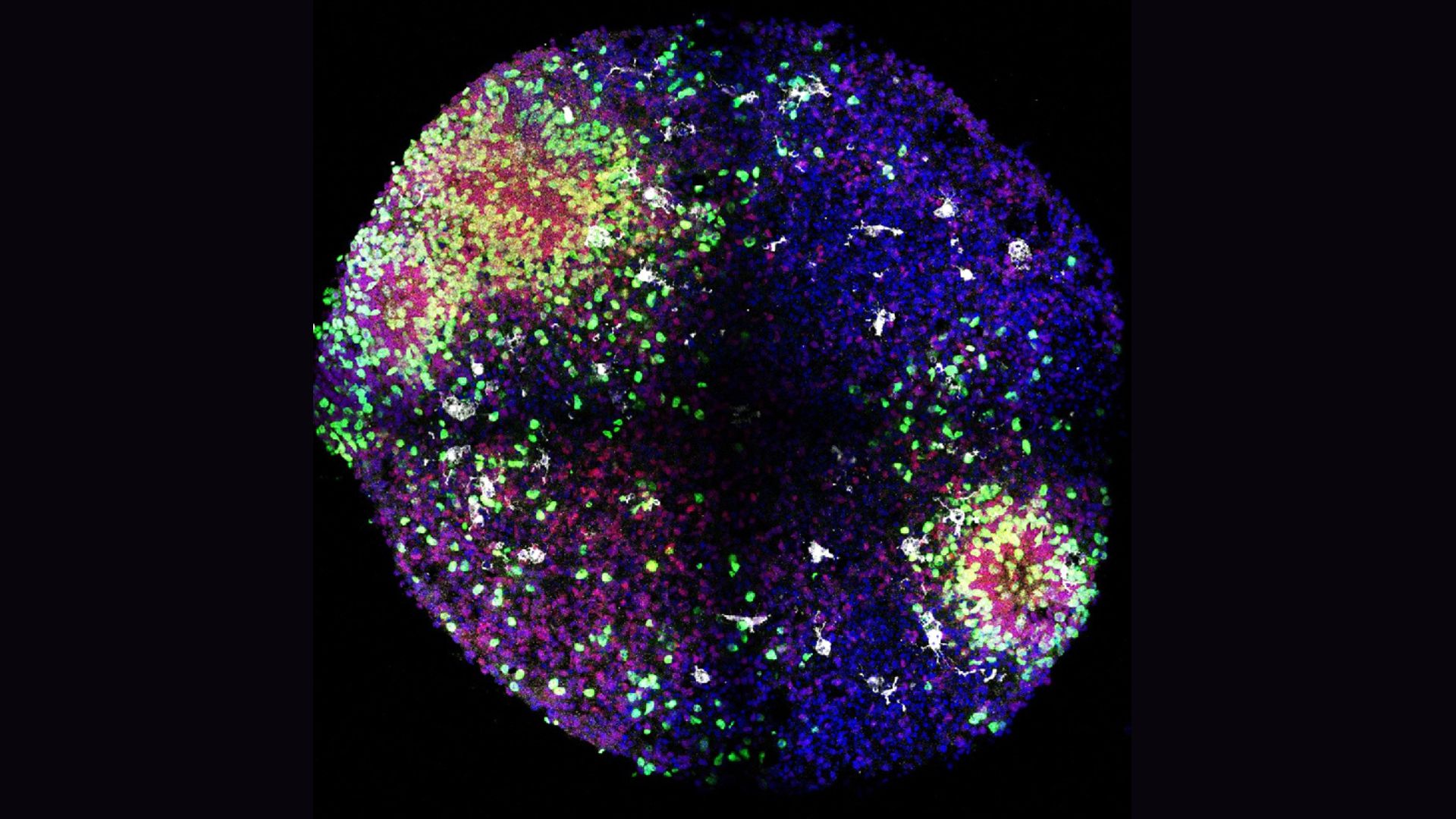7-Month-Old Babies Show Awareness of Others' Viewpoints

Infants as young as 7 months can take into consideration the perspective of others, a new study suggests.
Called theory of mind, this mental leap wasn't thought to occur until about age 4, with more recent work suggesting that, by the time they're 15 months old, babies are aware that another person has a different perspective on their surroundings.
Besides revealing babies' amazing mental feats, the new research contributes to the understanding of a process thought to be critical to social interactions: the ability to infer others' mental states.
The approach the researchers used for testing such young children, in which they timed the infants' reaction to a video, may also lead to earlier detection of developmental disorders, said lead researcher Ágnes Melinda Kovács of the Hungarian Academy of Sciences' Institute for Psychology. "Developing tasks that can be used with very young infants will significantly contribute to current efforts to achieve early detection and diagnosis of autism, and will pave the ways towards early intervention techniques," Kovács told LiveScience.
The mind of another
Perhaps the ability to detect different perspectives had been missed in babies because scientists didn't know the right questions to ask, Kovács and her fellow researchers pointed out.
Much of the past research largely relied on experiments like this: A young participant watches another child (let's say Joel) place a toy in a cupboard and leave the room. In Joel's absence, the toy gets moved to a basket. Three-year-olds in these types of studies typically predict that upon Joel's return he'll look in the basket, since they themselves know the toy has been moved. Their responses suggest they haven't taken into account that Joel can't know the toy is in the basket.
Get the world’s most fascinating discoveries delivered straight to your inbox.
The researchers reasoned young children might indeed have this theory-of-mind ability but that it gets masked in these experiments by their slower development in other cognitive areas.
Smurfs to the rescue
Kovács and her colleagues devised a new approach, applying it to both adults and 7-month-olds. In their experiments, participants watched a series of animated videos in which a ball rolls behind a small wall and then either stays there, rolls out of view (away from the wall), or rolls away and comes back to sit behind the wall.
At the end of the clip, the wall is removed to reveal a ball or no ball. Adult participants were told to push the spacebar on the computer keyboard as soon as they saw the ball.
Researchers would expect it to take longer if the result was unexpected – say, the ball should've been behind the wall but wasn't.
To help test theory of mind in preverbal children, a Smurf-like cartoon character is also in the video, observing the ball. The cartoon character doesn't always see the whole snippet. For instance, in one sequence the cartoon character watches the ball roll behind the wall and then leaves the room, not seeing the ball roll away from the wall and out of view. In another, the character watches from start to finish, and so knows where the ball ends up.
The infants' response times were measured by how long it took them to look away from the video screen. The longer it took, the more surprised they apparently were at seeing the ball behind the wall or not.
"Just imagine a situation in which you wait for a bus in a one-way street. If the bus comes from the normal direction, you get on and quickly forget the event," Kovács told LiveScience. "However, if the bus arrives from the opposite direction, you would be quite surprised and would stop one moment to think what is happening here. In analogy, we try to measure such surprise in preverbal infants via their looking time."
Thinking about Smurfs
Both adults and infants were quicker at detecting the ball when the cartoon character's "belief" about the ball's location matched the ball's actual whereabouts.
"Our conclusion is that apparently they take into consideration the Smurf's beliefs or perspective," said study researcher Ansgar Denis Endress of the Massachusetts Institute of Technology in a telephone interview.
"How deep this is another question," he added, saying the researchers don't yet know the mechanism behind the theory-of-mind ability. Endress is a postdoctoral fellow in MIT's Department of Brain and Cognitive Sciences.
By 7 months of age, it seems humans can perceive another's point of view, remembering it even after the other person leaves.
Next, the researchers plan to extend the work to atypical development to see how theory of mind may be "broken" in people with autism, who are known to have problems with social interactions. They also will look into the mechanism behind theory of mind, Kovacs said.
"We aim to investigate the limits of such mechanisms. For instance, how many people's beliefs can we track concurrently, how long do we sustain others' beliefs in our memory, and what are the situations in which we fail to do so?" Kovacs said.
The research is detailed this week in the journal Science.
- What Makes Humans Special?
- 10 Things You Didn't Know About the Brain
- Parents Choosing More Unusual Baby Names Now
You can follow LiveScience Managing Editor Jeanna Bryner on Twitter @jeannabryner.
Jeanna Bryner is managing editor of Scientific American. Previously she was editor in chief of Live Science and, prior to that, an editor at Scholastic's Science World magazine. Bryner has an English degree from Salisbury University, a master's degree in biogeochemistry and environmental sciences from the University of Maryland and a graduate science journalism degree from New York University. She has worked as a biologist in Florida, where she monitored wetlands and did field surveys for endangered species, including the gorgeous Florida Scrub Jay. She also received an ocean sciences journalism fellowship from the Woods Hole Oceanographic Institution. She is a firm believer that science is for everyone and that just about everything can be viewed through the lens of science.
